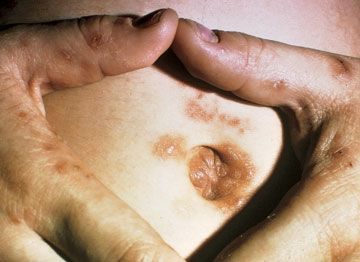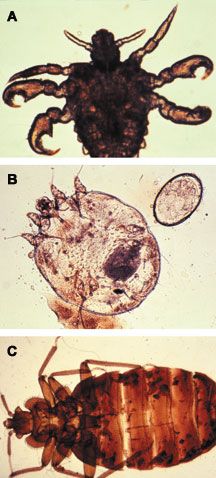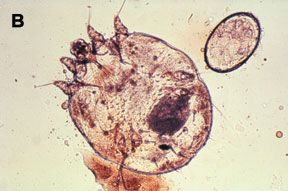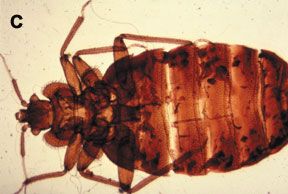- Clinical Technology
- Adult Immunization
- Hepatology
- Pediatric Immunization
- Screening
- Psychiatry
- Allergy
- Women's Health
- Cardiology
- Pediatrics
- Dermatology
- Endocrinology
- Pain Management
- Gastroenterology
- Infectious Disease
- Obesity Medicine
- Rheumatology
- Nephrology
- Neurology
- Pulmonology
Creature Discomforts: A Quiz
An 8-year-old child has intensely pruritic lesions on the thumbs, adjacent dorsum of the hand, soles of the feet, and navel. Vital signs are normal. The patient is otherwise healthy and has no recent history of exposure to poison ivy.

An 8-year-old child has intensely pruritic lesions on the thumbs, adjacent dorsum of the hand, soles of the feet, and navel. Vital signs are normal. The patient is otherwise healthy and has no recent history of exposure to poison ivy.
Which of the organisms pictured here is the most likely culprit?

Answer: B
Photo B depicts Sarcoptes scabiei, the microscopic-sized causative organism of human scabies.

This infection is virtually always transmitted by close personal contact because of the organism’s limited capacity to survive off of the human host. The gravid female mite creates burrows in the skin where she deposits her eggs. The resulting skin irritation is typically intensely pruritic; however, itching does not begin until the human host has been sensitized- about 4 to 6 weeks following the onset of infestation. Frequently, only about a dozen adult mites are detectable on the skin surface. For microscopic confirmation, the best places to scrape the skin to obtain a mite or egg (also shown in photo) include interdigital webs, the volar aspect of the wrist, and the glans penis.
This patient’s infection was confirmed by a scraping from one of the burrows that yielded recognizable S scabiei mites.

Photo A shows the pubic louse, Pthirus pubis. This organism causes the disease commonly referred to as "crabs." Pubic louse infestation is usually transmitted by close personal contact; however, spread can occur via contaminated undergarments and bedding. The bite of the pubic louse is typically too small to notice; most often nits can be seen on the pubic hairs but may also be found in axillae and on eyebrows and eyelashes. Localized symptoms range from slight discomfort to intolerable itching.
Photo C depicts the common bedbug, Cimex lectularius. This parasite hides in crevices during the

day and emerges to take a blood meal during the night. The bite causes small crusted, purpuric, or urticarial papules that are generally painless. A single insect typically produces several bites, often arranged in linear groups of 3 along an arm or leg, called the "breakfast, lunch, and dinner" sign.
